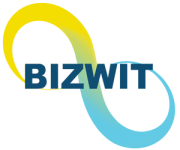Global Cancer Supportive Care Drugs Market is valued at approximately USD 20.50 billion in 2022 and is anticipated to grow with a healthy growth rate of more than 2.2% over the forecast period 2023-2030. Cancer supportive care drugs, also known as palliative care drugs, are medications used to manage the symptoms and side effects of cancer and its treatments. These drugs are designed to improve the quality of life for cancer patients by alleviating pain, reducing treatment-related complications, and addressing various physical and emotional challenges that arise during the disease. The Cancer Supportive Care Drugs Market is expanding because of factors such as the rising prevalence of cancer, and rising government funding for drug development.
The rising prevalence of cancer globally is fostering market growth, according to estimates from the International Agency for Research on Cancer (IARC), The estimated increase in the worldwide burden of cancer is 27.5 million new cases by 2040 from 1.9 million new cases in year 2021.Furthermore, increasing disposable income as well as improved healthcare structure has also helped people to access cancer supportive care drugs, which is also helping this market grow. For instance, according to an update from August 2021, MediShield Life coverage in Singapore went from paying USD 3,000 per month to a range of USD 200 to USD 9,600 per month, depending on the medications used. Along with increasing the eligibility requirements for Medication Assistance Fund subsidies for some expensive medications from USD 2,800 to USD 6,500, the government would also subsidize more cancer treatments. In addition, the increase in R&D and several pipeline cancer supportive care drugs and the surge in the global geriatric population are creating lucrative growth in the market. However, the high cost of Cancer Supportive Care Drugs stifles market growth throughout the forecast period of 2023-2030.
The key regions considered for the Global Cancer Supportive Care Drugs Market study includes Asia Pacific, North America, Europe, Latin America, and Middle East & Africa. North America dominated the market in 2022 owing to the dominance of key market player, rising prevelance of cancer disease in the region, and rising development of new cancer drugs in the region. Asia Pacific is expected to grow at a fastest rate during the forecast period, owing to factors such as rising prevelance of cancer, rising funding and investment on research and development activities and rising government support to the industry.
Major market player included in this report are:
Amgen Inc.
Baxter International Inc.
F Hoffmann-La Roche Ltd.
Glaxosmithkline Plc (Gsk) (Tesasro)
Heron Therapeutics Inc
Johnson & Johnson (Janssen Global Services, Llc,)
Merck Kgaa
Novartis International Ag (Sandoz)
Teva Pharmaceuticals Industries Ltd
Helsinn Healthcare SA
Recent Developments in the Market:
Ø In March 2022, Australian-based Imugene announced a new clinical trial partnership and supply agreement with MSD, a brand name of Merck & Co., Inc., Kenilworth, NJ, USA, to test the safety and effectiveness of Imugene’s HER-Vaxx, a B-cell activating immunotherapy, in combination with MSD’s anti-PD-1 therapy, pembrolizumab (KEYTRUDA), in patients with HER-2 positive gastric cancer.
Ø In March 2022, Pluvicto from Novartis has been authorised by the US Food and Drug Administration (FDA) to treat people with this specific cancer type. These patients have already had androgen receptor pathway inhibition and taxane-based chemotherapy.
Global Cancer Supportive Care Drugs Market Report Scope:
ü Historical Data – 2020 – 2021
ü Base Year for Estimation – 2022
ü Forecast period – 2023-2030
ü Report Coverage – Revenue forecast, Company Ranking, Competitive Landscape, Growth factors, and Trends
ü Segments Covered – Type, Application, Distribution Channel, Region
ü Regional Scope – North America; Europe; Asia Pacific; Latin America; Middle East & Africa
ü Customization Scope – Free report customization (equivalent up to 8 analyst’s working hours) with purchase. Addition or alteration to country, regional & segment scope*
The objective of the study is to define market sizes of different segments & countries in recent years and to forecast the values to the coming years. The report is designed to incorporate both qualitative and quantitative aspects of the industry within countries involved in the study.
The report also caters detailed information about the crucial aspects such as driving factors & challenges which will define the future growth of the market. Additionally, it also incorporates potential opportunities in micro markets for stakeholders to invest along with the detailed analysis of competitive landscape and Type offerings of key players. The detailed segments and sub-segment of the market are explained below:
By Type:
ESA (Erythropoiesis-Stimulating Agents)
G-CSFs (Granulocyte Colony-Stimulating Factors)
Antiemetics
Bisphosphonates
Opioids
NSAIDs (Non-Steroidal Auto Inflammatory Drugs)
Others
By Application:
Breast Cancer
Lung Cancer
Colorectal Cancer
Prostate Cancer
Liver Cancer
Stomach Cancer
Others
By Distribution Channel:
Hospital Pharmacies
Drug Stores and Retail Pharmacies
Online Providers
By Region:
North America
U.S.
Canada
Europe
UK
Germany
France
Spain
Italy
ROE
Asia Pacific
China
India
Japan
Australia
South Korea
RoAPAC
Latin America
Brazil
Mexico
Middle East & Africa
Saudi Arabia
South Africa
Rest of Middle East & Africa



